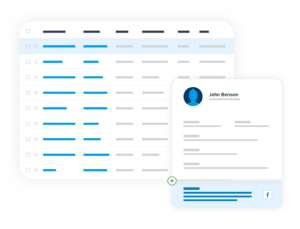Why Remove the Single Point of Failure in Your Business Relationships
Businesses have always come down to individuals who can work together to collaborate, make deals and deliver success on both sides of the interaction. But the war for talent and the accelerating great resignation means people move jobs more frequently than ever before. As a result, those incredibly valuable contacts made between your business and the customers and partners you work with are being broken.
Your Business Shouldn’t Collapse When a Contact Moves On
The challenge is that the departure of one individual can throw the whole relationship into chaos. To reduce impact and risk, businesses need to think about their relationships holistically and not rely on one specific contact. Given today’s employment market’s volatility, how can companies widen the relationship to include multiple key points of contact and quickly establish a genuine connection with their replacement when a key person departs?
Technologists understand the concept of a ‘single point of failure’—the idea that the failure of one thing can have far broader effects. The same goes for business relationships. When you work with a new customer or partner, it is important to establish multiple contact points. That means regularly communicating with everyone from the procurement department to senior leaders, the accounting team, and your day-to-day liaison. Building relationships with groups of key contacts in customer organizations is important to rescue the risk of the relationship collapsing when one person moves on.

Automate Mundane Processes to Free Up Human Resources
The loss of personnel is not just an issue if key people leave your customers and partners. What if an important contact leaves your organization? How will you ensure continuity of service and support the relationship? With potentially fewer people on staff and the ongoing war for talent during this period of record-low unemployment, organizations need to lean more on automation to handle mundane processes and free up the available human resources they have to provide exceptional customer experience.
Automation can support people on tasks such as report preparation, ensuring new services can be deployed through orchestration, and setting up regular meetings. The key is to use tools that support automation. And if those applications and services use low-code or no-code tools, you won’t be relying on increasingly scarce and costly technical resources. The time saved from working on repeatable tasks can be invested in building broader and stronger relationships.

Look for opportunities to use teams to look after customers and partners. While individual connections and relationships are essential, ensuring the continuity of a partnership needs to be forged through multiple points of contact. While a salesperson might make the initial contact, the ongoing success of a business relationship relies on many different people to guide things from implementation through to operations and ongoing support.
Be certain that your broader team makes contact with their counterparts. This will ensure the relationship with your customer or partner doesn’t depend on one person.
Make Technology Your Best Ally
Investing in a centralized platform where historical records of customer interactions are easily accessible is also important. Data shared with partners/customers must be readily available for the team to access in a central location. Hence, there isn’t a knowledge gap left when a key contact leaves the organization. Leveraging AI can make research on new contacts and key contacts within an organization much faster and automatically, ensuring your team is constantly updated on customer accounts.
With the increased volatility of the employment market, it is critical to building relationships with customers and partners that won’t break down if a single contact is severed. Think strategically about your relationships and avoid having a single point of failure.
This blog post is based on an article published in Enterprise IT World.



